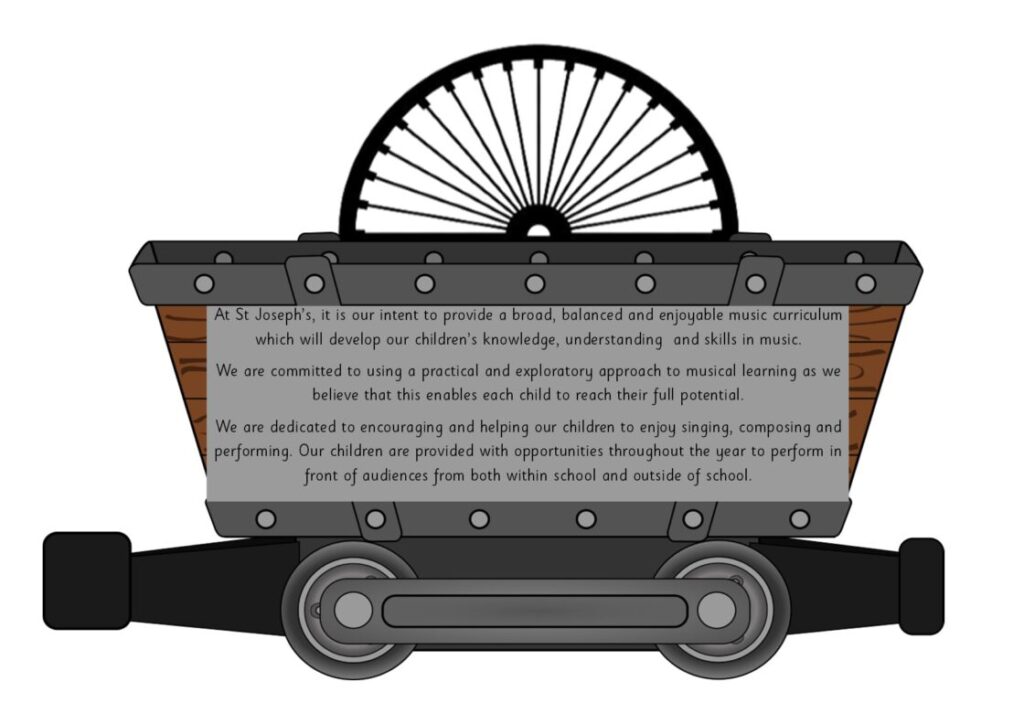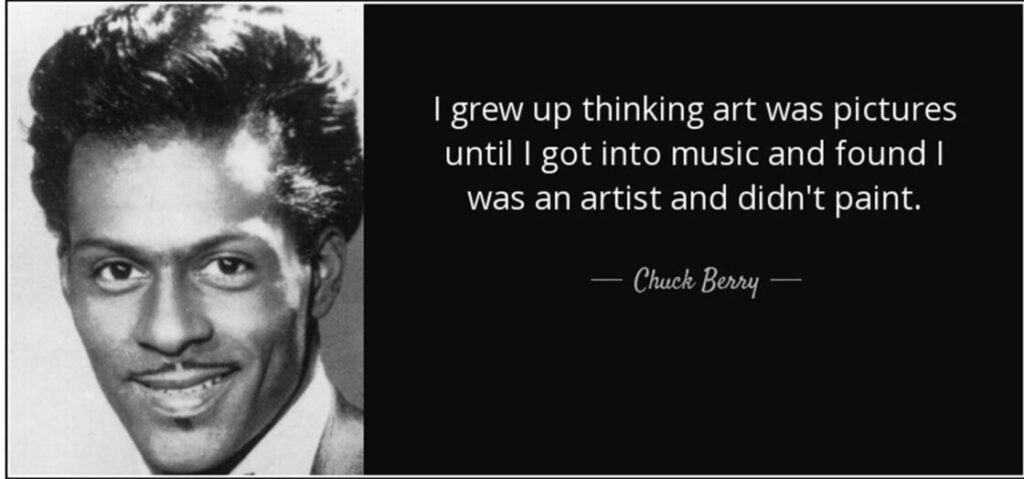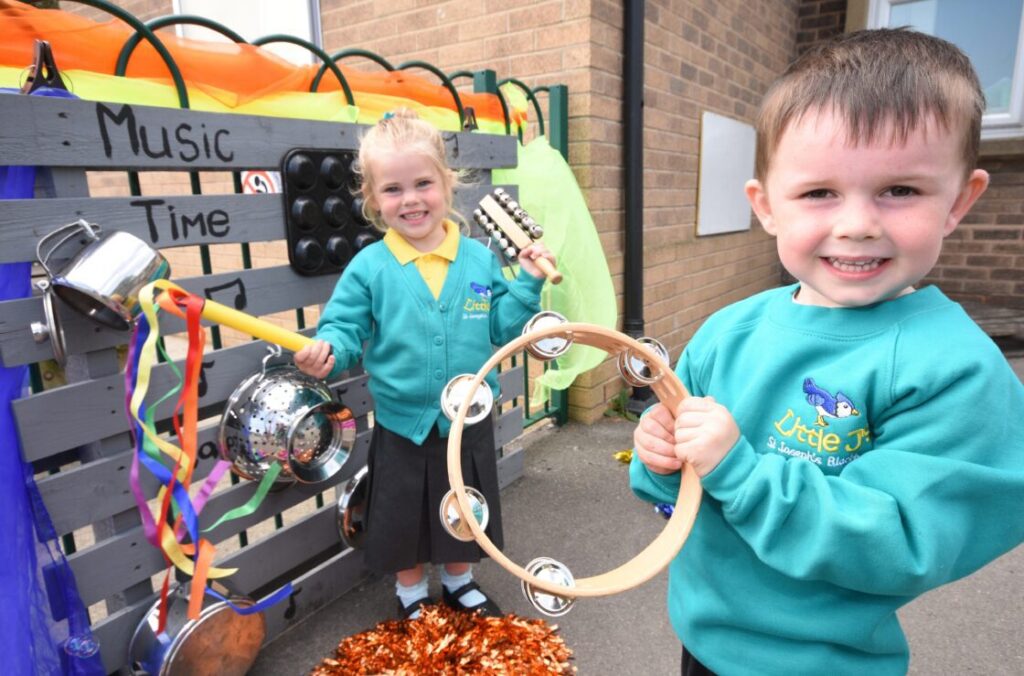Curriculum Intent: Music
In response to our mixed-aged classes, our curriculum is implemented on a two-yearly programme (Cycle A and Cycle B). This ensures complete curriculum coverage for our pupils. As children progress throughout the school, they develop their knowledge and skills through a range of topics. By Year 6, all children will have followed our Curriculum Narrative pathway.
- Music Cycle A
- Music Cycle B
- Music in Early Years
- Music Curriculum Narrative
- Music Overview
- Music Assessment
- Music Development Plan 2023-24

Characteristics of a Musician
- A rapidly widening repertoire which they use to create original, imaginative, fluent and distinctive composing and performance work.
- A musical understanding underpinned by high levels of aural perception, internalisation and knowledge of music, including high or rapidly developing levels of technical expertise.
- Very good awareness and appreciation of different musical traditions and genres.
- An excellent understanding of how musical provenance – the historical, social and cultural origins of music – contributes to the diversity of musical styles.
- The ability to give precise written and verbal explanations, using musical terminology effectively, accurately and appropriately.
- A passion for and commitment to a diverse range of musical activities.
Implementation
Our intent is that every pupil is a musician, developing as a performer, singer and composer; with the ability to listen and to critically analyse music. The National Curriculum is at the heart of the document, developing incremental improvement lesson by lesson and building on the ambition of the Model Music Curriculum.
Singing is a “Golden Thread” (National Plan for Music Education) ensuring that pupils sing and develop their technique every lesson.
Pupils will develop deep musical knowledge of music through demonstrating the musical skills they have learnt.
The three pillars of learning; technical, constructive and expressive are all embedded through practical music making and analysis. By giving explicit singing and listening examples we are making sure that pupils are exposed to a breadth of musical styles and genres, embedding the work of the great composers as key artists in that particular style.
High quality music teaching is our goal, making sure that there is progression between all Key stages, ensuring standard use of vocabulary and being explicit in the musical knowledge and skills pupils will learn by the end of KS2, ensuring continued high-quality music teaching at Key stage 3 through deeply embedded skills. Repetition and incremental improvement is key to effective music learning, making sure that deep knowledge is embedded and that pupils don’t purely experience music.
Threshold Concepts
In music, there are seven key interrelated threshold concepts, which when combined, ensure that our students can access a deep understanding of the subject. The threshold concepts relate to core aspects of disciplinary knowledge and substantive knowledge. As students progress through the curriculum narratives, so should their understanding of the threshold concepts:
1) Pitch
The pulse of music is the underlying and steady beat in a phrase or piece of music. This involves exploring:
• Exploring how to feel the pulse of a piece of music using body percussion to demonstrate this.
• Identifying and working with different tempos and recognising changes to tempo.
• Understanding time signatures and how to respond to these in a piece of music.
2) Rhythm
Rhythm involves the changing pattern of beats that make up a piece of music. This involves exploring:
• Exploring rhythmic notation and the equivalent rests involved.
• Investigating syncopation, how this is notated and the effect this has on a piece of music.
• Understanding the concept of a bars and how notation fits within this.
3) Melody
The melody of a piece of music is the tune. When studying this, pupils will:
• Explore pitched notation developing as each year progressing initially working with 2 notes building up to exploring an octave range in Year Six.
4) Active listening and Appraising
Active Listening and Appraising involves listening to music and responding by doing something. When exploring this, pupils will:
• Explore the features of music and musical changes in the piece.
• Identify and compare music from different traditions with two or more parts.
• Understanding why syncopation is used and the effect it has.
• Identifying instrumentation, tempos, styles of music and mood and emotion.
5) Performing
Performing involves the act of playing or singing music to others. Pupils will:
• Learn how to perform using untuned percussion, body percussion, the voice and tuned instruments.
• Read notation and perform from this.
• Learn how to play the cornet.
• Compose using instruments
• Play with accuracy and expression both in a solo or ensemble setting.
6) Singing
Singing is the act of performing songs or tunes by making musical sounds with the voice. When exploring this, pupils will:
• Sing in unison whilst exploring folk songs.
• Investigate the concepts of singing in rounds and being accompanied with an ostinato.
• Sing in two parts with counter melodies in a given range.
• Sing in tune and with expression, following the direction of the conductor.
7) Composition
Composing involves the process of coming up with your own musical ideas that may or may not be recorded. Pupils will learn to:
• Use rhythm grids to compose using both representations and standard notation.
• Imitate and compose music using instrumentation or with either the voice or tuned percussion.
• Understand rhythm patterns and how they can be re-created.
• Compose melodies and use complex rhythms to make music exciting.
Please see Long Term Planning for Music
Aspirations For The Future
Pupils develop an understanding of how subjects and specific skills are linked to future jobs.
Here are some of the jobs you could aspire to do in the future as a Musician:
- Music performer
- Music composer
- Music songwriter
- Music teacher
- Sound Tech
- Play an instrument as part of a band or orchestra – paid or voluntary
Inspirational Figure

Impact
All children at our school receive a broad and balanced curriculum regardless of year group or ability.
Teachers plan lessons with clear progression of skills and knowledge, to ensure that all children access music at an age-appropriate level.
Children are learning to work both independently and as part of a group, ensuring skills of resilience and teamwork are promoted within music.
Children are enthused and engaged in the wide variety of music activities.
Opportunities to perform both inside and outside of school are aimed at engaging, inspiring and motivating our children’s knowledge, participation and enjoyment in this subject.
Pupil Voice
Coming soon….
Snapshots
Coming soon….



